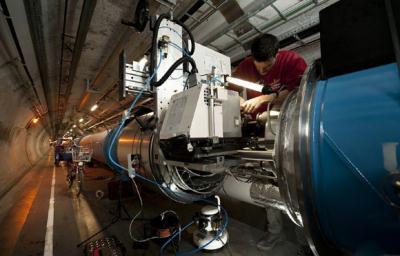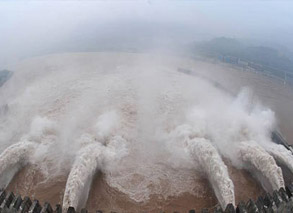"Big Bang" machine experiences first particle collisions
2009-11-24 10:12 BJT
 |
| The world's most powerful atom smasher on Monday experienced the first collisions of particles, only three days after it was restarted, the European Organization for Nuclear Research (CERN) said. (File Photo) |
The four small-scale collisions came just three days after the LHC restart, demonstrating the excellent performance of the beam control system, said CERN, the world's leading laboratory for particle physics.
Since the start-up, the operators have been circulating beams around the ring alternately in one direction and then the other at the injection energy of 450 GeV. The beam lifetime has gradually been increased to 10 hours, and on Monday beams have been circulating simultaneously in both directions, still at the injection energy.
Next on the schedule is an intense commissioning phase aimed at increasing the beam intensity and accelerating the beams. All being well, by Christmas, the LHC should reach 1.2 TeV per beam, and have provided good quantities of collision data for the experiments' calibrations, CERN said.
Editor: Zheng Limin | Source: Xinhua
 Mail
Mail Share
Share Print
Print


 Video
Video









 2009 China Central Television. All Rights Reserved
2009 China Central Television. All Rights Reserved